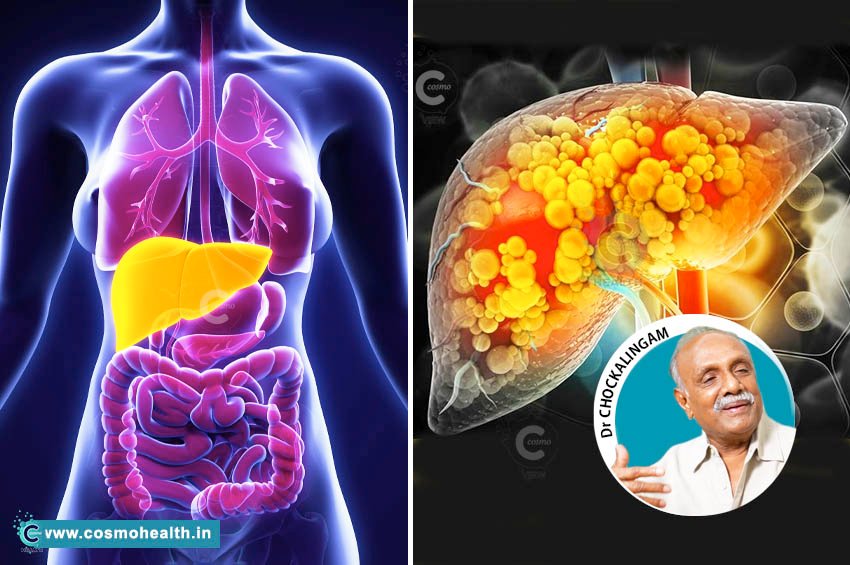Fatty liver disease, known medically as hepatic steatosis, has become increasingly common, affecting millions worldwide. As a complex condition, it involves the accumulation of fat in liver cells, which can lead to serious health issues if left untreated. In today's discussion, we delve into the causes, symptoms, and treatment strategies for fatty liver disease, guided by the expertise of Dr. Chockalingam from Cosmo Health.
Fatty liver occurs when excess fat builds up in liver cells, a condition that can arise from various factors including poor diet, obesity, diabetes, and excessive alcohol consumption. It is often asymptomatic in its initial stages, making early detection crucial for effective management.
Key Facts about Fatty Liver:
- Fatty liver can be classified into two main types: alcoholic fatty liver disease (ALD) and non-alcoholic fatty liver disease (NAFLD).
- The liver is a vital organ responsible for detoxification, metabolism, and nutrient storage. Excessive fat leads to impaired liver function over time.
- Symptoms can be silent, but when they present, they may include fatigue, weight loss, and abdominal discomfort.
Causes of Fatty Liver Disease
Understanding the underlying causes is essential for effective prevention and treatment. Here are the primary contributors:
1. Obesity
- Higher amounts of body fat lead to increased fat deposition in the liver.
- Body Mass Index (BMI) over 23 increases the risk of developing fatty liver significantly.
2. Insulin Resistance and Diabetes
- Insulin resistance is a key factor in the development of NAFLD, particularly in individuals with type 2 diabetes.
3. Poor Dietary Choices
- Diets high in sugars, refined carbohydrates, and unhealthy fats contribute significantly to fatty liver.
- Processed foods and excessive calorie intake can exacerbate the condition.
4. Alcohol Consumption
- Alcoholic fatty liver is caused directly by the consumption of alcohol, and its severity can greatly affect liver health.
- Limiting alcohol intake is vital for those already diagnosed with fatty liver.
5. Sedentary Lifestyle
- Lack of regular physical activity increases the likelihood of weight gain and fat accumulation in the liver.
Recognizing the Symptoms
Often, fatty liver disease does not present noticeable symptoms until it progresses to more severe stages such as fatty liver inflammation (steatohepatitis) or liver fibrosis. Common symptoms include:
- Fatigue
- Weight loss
- Discomfort in the upper abdomen
- Enlargement of the liver (hepatomegaly)
Diagnosis of Fatty Liver
To diagnose fatty liver, healthcare providers often use blood tests, imaging techniques (such as ultrasound), and sometimes liver biopsy, which provides conclusive information about the presence of fat and inflammation in the liver.
Treatment and Management Strategies
While fatty liver disease can be serious, the good news is that it often responds well to lifestyle changes. Here are some effective strategies recommended by Dr. Chockalingam:
1. Dietary Changes
- Avoid high-calorie diets: Reducing intake of simple carbohydrates, sugars, and unhealthy fats is vital.
- Incorporate whole foods: Focus on fruits, vegetables, lean proteins, and whole grains.
- Stay Hydrated: Drinking plenty of water supports liver function and overall health.
2. Regular Exercise
- Physical activity aids in weight loss, which is one of the most effective treatments for managing fatty liver disease.
- Aim for at least 150 minutes per week of moderate aerobic activity, alongside strength training exercises.
3. Weight Management
- Losing just 5-10% of body weight can significantly impact liver health and reduce fat accumulation.
- Avoid quick-fix diets; aim for sustainable lifestyle changes.
4. Limit Alcohol and Toxin Exposure
- Reducing or eliminating alcohol consumption can prevent further liver damage.
- Stay away from environmental toxins that may strain liver function.
5. Stress Reduction
- Chronic stress can lead to unhealthy eating habits and lifestyle choices. Practice relaxation techniques like meditation, yoga, or deep-breathing exercises.
Can Fatty Liver Be Reversed?
Absolutely! Dr. Chockalingam emphasizes that with commitment to lifestyle changes and adherence to a well-structured diet and exercise plan, individuals can potentially reverse fatty liver disease. Improvements can be seen within 6 months to a year, signaling that healing is possible.
Conclusion
Taking proactive steps towards preventing and treating fatty liver disease is essential for maintaining overall health. By understanding the causes, recognizing the symptoms, and implementing effective lifestyle changes, one can significantly improve liver function and prevent serious health complications. For anyone concerned about fatty liver disease or seeking tailored dietary support, seeking professional guidance is a wise choice. Remember, your liver is relying on you to take charge of your health!
Are you or someone you know at risk for fatty liver disease? Start your journey towards healthier living today by making informed dietary choices, exercising regularly, and staying aware of your health. Join us in being proactive about our health!




